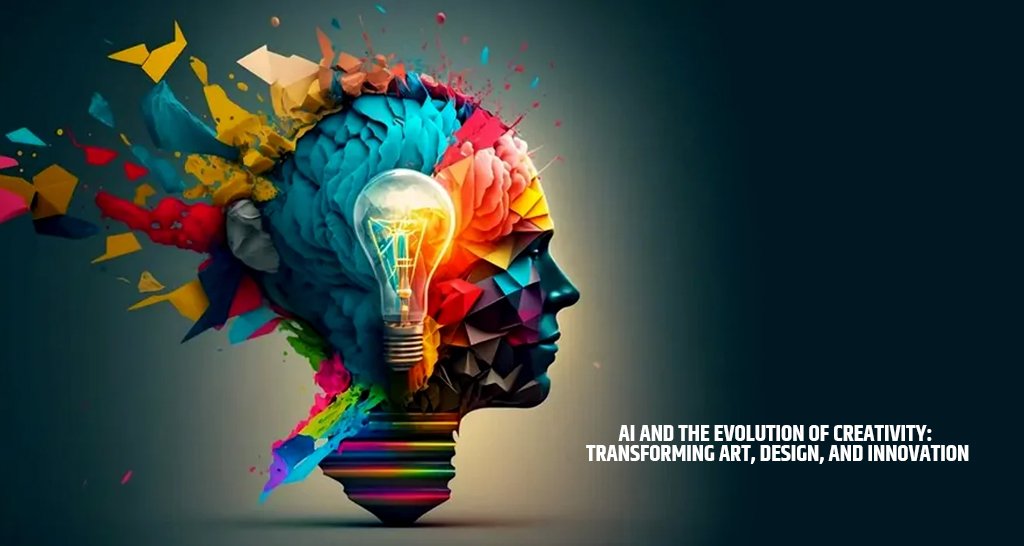The Rise of AI in Creative Fields
The emergence of artificial intelligence (AI) in creative fields marks a significant evolution in the way art and design are conceptualized and produced. Historically, artists and designers have relied on their unique skills and intuition to create compelling works. However, with the rapid advancement of technology over the last few decades, AI has begun to play a crucial role in these creative disciplines. Initially, early experiments with AI in creativity focused on basic algorithms that could generate text or simple images, but these initial forays laid the groundwork for much more sophisticated applications we see today.
In the contemporary landscape, various AI tools have been developed which integrate machine learning, neural networks, and deep learning algorithms to assist in artistic creation. These technologies enable artists to explore new dimensions of their creativity by providing unconventional insights and solutions, thereby expanding the possibilities of artistic expression. For example, platforms like DeepArt and Runway ML allow artists to generate intricate designs and transform photos into striking artworks by leveraging the power of AI algorithms.
Moreover, significant achievements in AI-driven creativity can be observed in the fashion and architecture industries. AI design systems can analyze trends and consumer preferences, tailoring unique and inventive designs that would have otherwise been challenging for human designers alone. A notable example includes the use of AI in the development of the “AICAN,” a creative system capable of producing original art that mimics various styles and periods. AI’s capacity to process vast amounts of data effectively enhances creativity by offering novel perspectives, making AI an invaluable partner in the artistic process.
This collaborative potential between AI and artists fosters an environment where creativity knows no bounds. As we continue to witness advancements in AI technology, the future of creativity appears to intertwine harmoniously with these innovative tools, broadening the horizon for artists and designers alike.
Enhancing Artistic Expression through AI
The advent of artificial intelligence (AI) has significantly transformed the landscape of artistic expression, inviting artists to explore new dimensions of creativity. Various AI tools and platforms now offer artists the opportunity to augment their creative processes, leading to groundbreaking innovations in art, design, and music. One notable example is generative art, where algorithms generate unique visuals based on predefined parameters set by the artist. This collaborative partnership between artist and algorithm allows for an iterative process where both entities influence the resulting artwork, producing outcomes that are often unexpected and original.
Another fascinating application of AI in art is style transfer, where an artist can apply the visual characteristics of one artwork to another, effectively merging styles. This technique not only expands the artist’s toolkit but also paves the way for hybrid creations that blend classic and contemporary influences. AI-generated music, too, is gaining traction, enabling composers to collaborate with AI systems that can generate melodies or harmonies based on specific input criteria. These innovations promote a symbiotic relationship, enriching the creative landscape while maintaining the artist’s original vision.
Despite the promising advancements, the integration of AI into artistic practices does present some challenges. Artists may confront limitations related to algorithmic biases or a lack of emotional depth that can sometimes characterize AI-generated works. Moreover, there can be an ongoing debate about the authenticity and authorship of AI-produced outputs. However, rather than viewing AI as a replacement for human creativity, many artists regard these tools as instruments of inspiration—catalysts that provoke new ideas and push boundaries. Ultimately, the relationship between AI and artists highlights how technology can play a positive role in heightening artistic expression, leading to unique outcomes that enrich the cultural discourse.
AI’s Impact on Design and Innovation
The integration of artificial intelligence (AI) in the design landscape has fundamentally altered and enhanced how creativity is exercised across various disciplines, including graphic design, product development, and architecture. AI algorithms now play a pivotal role in optimizing design processes, allowing for increased efficiency and the ability to generate personalized user experiences. By analyzing vast data sets, AI can identify patterns and preferences that inform more effective design strategies.
In graphic design, AI-powered tools can aid designers in creating customized visuals that resonate with targeted audiences. For instance, platforms like Adobe’s Sensei utilize machine learning to suggest design enhancements, ensuring that creatives can produce work that aligns with current trends while maintaining a unique flair. Such advancements not only elevate visual appeal but also lead to more effective communication of messages.
In the realm of product design, companies are leveraging AI to model user behavior and preferences, which in turn informs the creation of products that better meet market demands. Consider the case of a leading electronics manufacturer that employed AI technology to streamline the design process for a new line of headphones. By utilizing AI to simulate user feedback before actual production, they were able to reduce development time by 30% while increasing customer satisfaction by delivering a product that met users’ specific needs.
Architecture, too, has witnessed a transformation through AI, particularly in the realm of smart buildings and sustainable design solutions. Algorithms capable of analyzing multiple variables can propose innovative architectural designs that maximize space usage while minimizing energy consumption. Furthermore, AI facilitates collaboration among design teams, offering platforms to integrate ideas seamlessly, thereby encouraging a more cohesive creative process.
AI in design stands as a testament to the potential of technology to enhance creativity and improve efficiency, paving the way for innovations that were once deemed unattainable. As AI continues to evolve, so too will the possibilities for design, promising a future where creativity knows no bounds.
The Future of AI-Driven Creativity
As technological advancements continue to evolve, the integration of artificial intelligence (AI) in the realms of art and design is poised to grow significantly. Emerging trends indicate that machine learning and neural networks will play pivotal roles in enhancing creative processes. These technologies enable AI systems to analyze vast datasets, drawing inspiration from a myriad of artistic styles and cultures. Thus, artists and designers can utilize AI as a collaborative tool, enriching their creative expression and potentially unlocking new forms of art.
However, the rise of AI-driven creativity brings forth important ethical considerations. One primary concern is the ownership of AI-generated works. As AI systems generate art based on training data, the question arises: who owns the final product? It is crucial for the arts community to establish clear frameworks around copyright and intellectual property rights before AI-generated pieces become mainstream. Additionally, the originality of these works is under scrutiny; can art created by an algorithm possess the same value as that crafted by human hands? Addressing these inquiries will be essential as society navigates this new creative territory.
AI’s influence on the artistic landscape may also lead to societal implications. As AI tools become increasingly accessible, we can anticipate a shift in how audiences engage with art. The barrier between creator and consumer may blur, inviting more individuals to participate in the creative process. In the coming years, we may see a fusion of traditional methods and AI-driven capabilities, fostering collaboration that strengthens artistic communities. Ultimately, the future of AI in art and design holds the promise of redefining creativity, leading to a richer and more inclusive cultural landscape.



